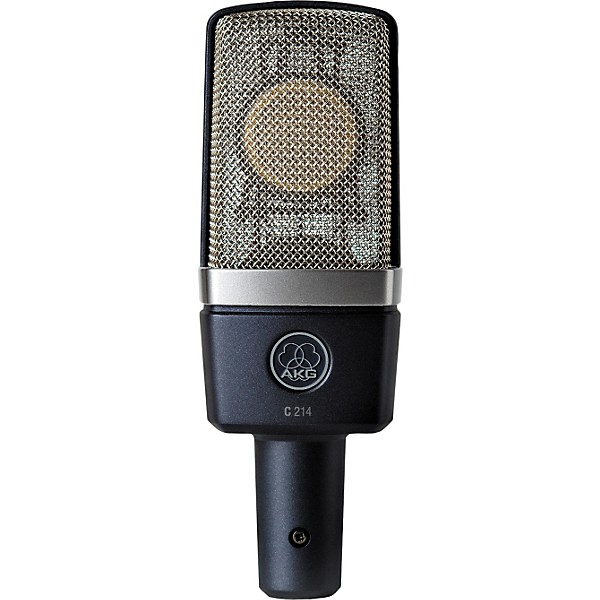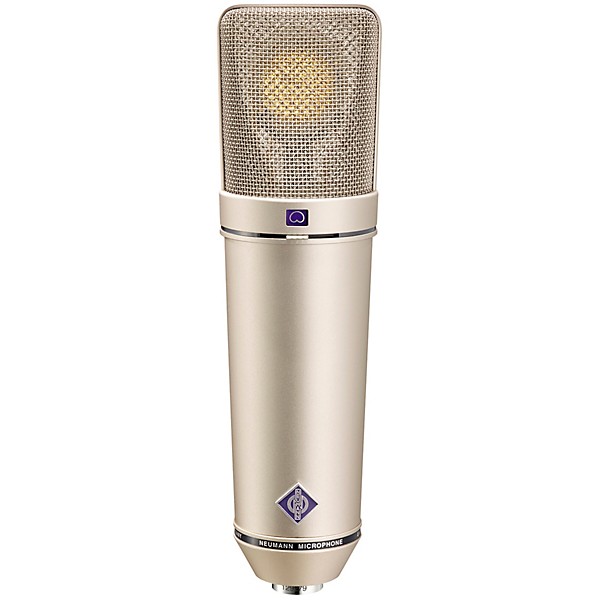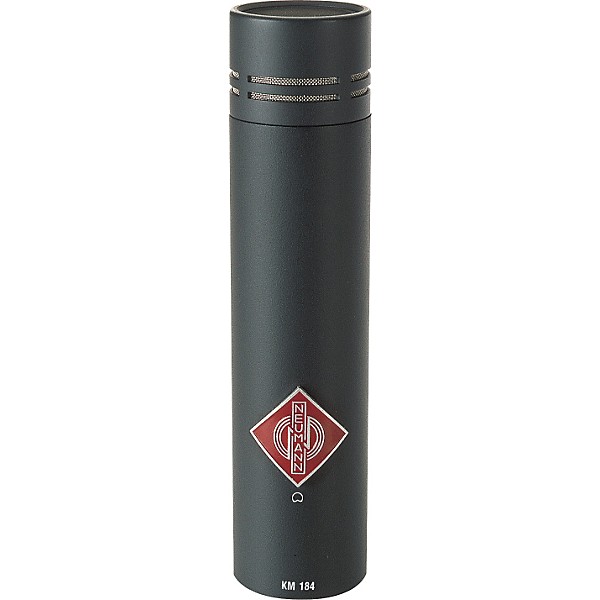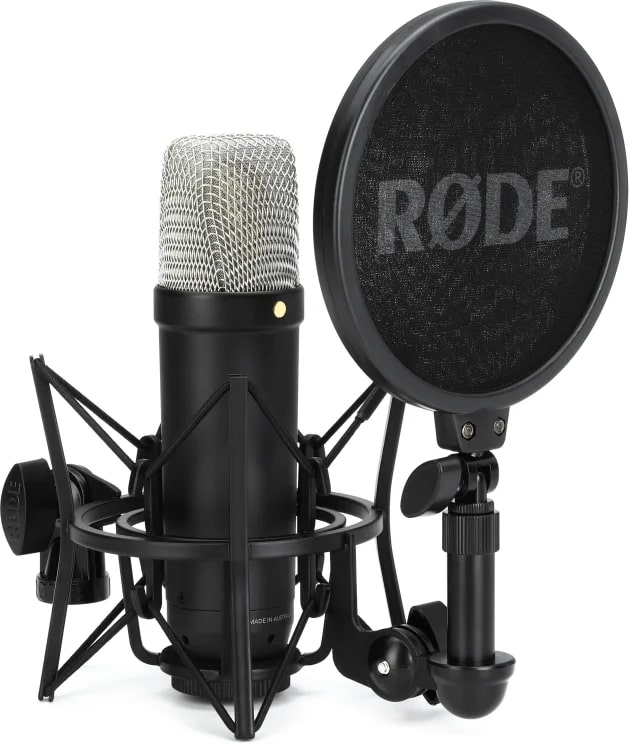When you buy through our links, we may earn an affiliate commission.
Do you need a mic to record vocals or instruments, but not sure where to start? Well, condenser mics are the perfect type of microphone for studio recordings, since their recording quality is detailed, transparent, and overall impeccable.
The market is flooded with all kinds of condenser mics that range from faulty to pro-level. It can be hard to know which of these mics is the perfect choice for your studio or DIY recording setup.
Fortunately, this article will tell you 7 of the best condenser mics you can buy, so you'll be able to find the perfect fit. The AKG C214 takes the top spot on the list because it provides crystal-clear audio quality at an affordable price point.
Read on for the mic rankings, buyer's guide, and FAQ section. By the end of the article, you'll know everything you need to know in order to make your decision.
Quick Summary of the Best Condenser Mics
- AKG C214 Large-diaphragm Condenser Microphone (Overall Best Choice)
- AKG C414 XLII Large-diaphragm Condenser Microphone (Most Versatile)
- Behringer B-1 Large-diaphragm Condenser Microphone (Most Budget-Friendly)
- Neumann U 87 Ai Large-diaphragm Condenser Microphone (Premium Pick)
- Neumann KM 184 Cardioid Small-diaphragm Condenser Microphone (Best for Percussion)
- Rode NT1 Signature Series Condenser Microphone with SM6 Shock mount and Pop Filter (Best Value)
- Audio-Technica AT2020 Cardioid Medium-diaphragm Condenser Microphone (Best Travel Mic)
Best Condenser Mics
Overall Best Choice
SPECS
- Polar pattern: cardioid
- Frequency range: 20Hz to 20kHz
- Weight: 0.62 lbs
If you're just now getting into the world of microphones, then there is SO much to learn, and so many different things to consider before purchasing one. Microphones have vastly different purposes, applications, strengths, and weaknesses.
Let me take the hassle out of the search for you and simply recommend the AKG C214. I can basically guarantee you'll be happy with it.
When it comes to condenser mics, I had to rank the AKG C214 as the top spot because of a few main factors: value, versatility, and sound quality.
Condenser mics are primarily used for studio recordings, as opposed to stage performances. They're designed to be highly sensitive, and highly accurate in their capture of the source sound. This makes them a great choice for DIY musicians looking to record their own tracks at home.
The AKG C214 gives you everything you need for an at-home studio. Upon playback, I was blown away with this microphone's sound quality. It's a great value indeed.
Its versatility is another huge selling point here. Many mics are specialized for specific use cases because they are better at replicating certain frequencies or coloring the sound a certain way.
The AKG C214, however, provides accurate recordings and is suitable for vocals, instruments, or speech. In a pinch, you could even use it overhead to record drums and it would honestly sound just fine.
The point is, this microphone is a one-stop-shop for just about all your recording needs, and it comes at a price point that is more realistic than some of the other more premium options on this list.
Most Versatile
SPECS
- Frequency range: 20Hz to 20kHz
- 3 bass cut filters and pre-attenuation levels
- Dynamic range: 152 dB
- Weight: 0.66 lbs
The previous entry was for the budget-conscious musician who wants to stretch a reasonable budget as far as it will go.
If you have over a grand to spend on your microphone, then the AKG C414 XLII is for you. This is a huge upgrade from the AKG C214 (which was already an amazing mic).
The AKG C414 is without a doubt one of the most versatile condenser microphones on the market. It has 9 switchable polar patterns, so you can fine-tune it for any occasion.
Use the omni-polar pattern to record everything in the room, including background noise. Use the figure 8 polar pattern to record two sound sources at once, like if you have a podcast with two people speaking. The cardioid polar pattern is useful for recording vocals, acoustic guitars, and most other sound sources.
The mic also has three switchable pre-attenuation pads at -6dB, -12dB, and -18dB, as well as three different bass cut filters. Wow, that's versatile!
I also like the LED display that turns red to tell you when you're clipping. This will come in handy just in case your interface doesn't have one or it's out of your view when you're recording.
Most Budget-Friendly
SPECS
- Frequency response: 20Hz to 20kHz
- Weight: 1 lb
- 75 Hz low cut filter
If ever there was a "beater microphone," this could be it. Now, I'm obviously not suggesting you toss around the Behringer B-1, as it is breakable like all condenser mics.
But if I had a rowdy friend come over and mess around with my mic, I'd be a lot more comfortable with it being a $100 Behringer B-1 than a $3,000 Neumann 87 (spoiler alert for the next mic on the list).
All this to say, the Behringer B-1 is a fantastic option for anyone who wants a quality condenser mic they won't have to worry too much about. This could be a first mic for a hobbyist, or a backup mic for a recording artist on the go.
The B-1 is fairly durable for a condenser mic, and more importantly, it performs almost as well as the condenser mics that cost upwards of $400.
If you're a DIY producer looking to record your vocals or acoustic guitar, for example, then by the time your recording makes its way into the final mix, most listeners will have no idea that you used a $100 mic to record it.
It comes with a shock mount, windscreen, and carrying case. Behringer markets this mic as a low-cost workhorse, and it's designed to be suitable for any type of home recording.
Premium Pick
SPECS
- Signal to Noise Ratio: 82dB (Cardioid), 79dB (Omni), 80dB (Figure-8)
- 3 switchable polar patterns
- Frequency response: 20Hz to 20kHz
- Weight: 1.1 lbs
This ultra-high-quality mic is a recreation of a renowned microphone model from the '60s and '70s. Back in 1967, the U 87 was introduced to the market. By the mid-70s, it had become a staple in recording studios across the world.
At this time, the U 87 set the new benchmark for recording quality and fidelity. Now, the Neumann U 87 Ai has come to reshape the game yet again. This condenser mic uses the same capsule design as its predecessor, but the electronic components have been updated and improved.
The result is higher sensitivity, more operational headroom, and a reduced signal-to-noise ratio by about 3dB.
So the first question you probably have is, is it worth the money? The answer entirely depends on your plan for the mic. If you're a DIY musician releasing demos, then you probably don't need a mic that is this top-of-the-line.
But if you're a professional producer, mixer, or self-produced artist, then it might make sense to spare no expense for your studio's condenser mic. After all, the Neumann U 87 Ai is at the top of the mountain when it comes to audio quality and versatility.
In terms of quality alone, this may actually be the best condenser mic on the market. At the very least, there is no mic that sounds objectively better than it does. This mic captures crystal clear, uncolored audio with an extremely accurate stereo image.
You don't have to look far to find the resounding consensus online that the Neumann U 87 Ai's recording quality is unmatched.
Best for Percussion
SPECS
- Frequency response: 20 to 20kHz
- Self-noise: 16db (A-weighted)
- Total dynamic range: 122 dB
Up until this entry, every mic on the list has been meant for a wide range of applications. A good condenser mic can be a one-size-fits-all solution for many DIY recording artists.
But for those who work in a studio with multiple mics, each one typically fulfills a specific purpose and is therefore more specialized.
Drums are notoriously hard to record properly as their loud volume can actually damage less resilient mics if they are too close. If you're in the market for a condenser mic specifically to record drums with, then look no further than the Neumann KM 184.
This mic is perfect for recording loud sound sources like percussion because it can withstand high levels of sound pressure (138dB to be exact) without sustaining any damage. It also has a low-noise floor, so it can capture the subtle tonal characteristics of the room without the source getting drowned out by unwanted noise.
I also like the unorthodox design. It's convenient to set up, much like an SM-57, but it still performs exceptionally well since it's a small diaphragm condenser mic.
I've found that the Neumann KM 184 really shines as a snare mic or for drum overheads. Its physical design makes it much more convenient than a large diaphragm condenser mic, and its electronics yield better-quality recordings than a dynamic mic would.
And of course, since it's a great mic all around, you could also use it to record vocals, guitar amps, or acoustic guitar. It's just that there are cheaper, less specialized options out there that can do that as well.
Best Value
SPECS
- Frequency response: 20Hz to 20kHz
- Polar pattern: cardioid
- Weight: 11.04 oz
If you're someone who's always looking for the best possible value, then the Rode NT1 may be the best condenser microphone for you. It's affordable, convenient, and perfect for your DIY recording studio.
At just over 11 ounces, it's incredibly light for a condenser mic. It also comes with the SM6 shock mount and pop filter, so it has everything you need to get recording right out of the package.
Rode is known for making user-friendly, budget-savvy microphones that many content creators love. The NT1 is a great choice for any podcaster or recording artist who wants to jump-start their content creation journey.
It won't break the bank, and it's convenient to use and set up.
The most notable shortcomings the mic has are 4dB of self-noise and an output impedance of 100 ohms. You may have a bit of noise in your recording, but not enough for most listeners to notice.
Also, there are very cheap denoiser plugins you can get for your DAW if you want to eliminate this small issue altogether.
Convenience is the name of the game with the NT1, and for the price, you really can't go wrong.
Best Travel Mic
SPECS
- Frequency response: 20Hz to 20kHz
- Self-noise: 20dB
- Weight: 0.76 lbs
Audio-Technica is another brand known for catering to budget-savvy creators, and the AT2020 is no exception.
It's one of the best condenser microphones for musicians who want to record on the go. Why? It's one of the most lightweight and compact condenser mics on the market, and it has a high maximum SPL (meaning it can withstand high volume without being damaged).
This mic doesn't quite have the outstanding audio quality of some of the large diaphragm condenser microphones out there, but the upside is that it's far more portable and less fragile.
With 20dB of self-noise, your recordings will have a noise floor that is somewhat perceptible if you're listening closely. This will bother some perfectionists, but it's completely fixable in post with a denser plugin (Waves makes a great one called the NS1).
Aside from that, however, there isn't much I can say about this mic that isn't resoundingly positive. It's miles ahead of most portable mics in its price range, and it can be used to record just about any sound source.
Pack it up in its carrying pouch, and all you need is a laptop, interface, and XLR cable before you've got a traveling recording studio! Now you're ready to create music or podcasts whenever - and wherever - inspiration may strike.
Best Condenser Mics Buyer's Guide
So, that was a lot of great condenser microphones. Let's dive into the buyer's guide, where I'll break down the specific things to look out for on your search for the best condenser mic.
This way, you'll be able to make a more informed purchase, whether you buy a mic from this list, or a different condenser mic that sparks your interest.
Polar Pattern
All mics have a polar pattern, which determines how sensitive the mic is to sounds coming from different directions.
Cardioid is the most common type of polar pattern. Mics with this polar pattern are most sensitive to sounds directly in front of them. The sensitivity decreases as you move to the sides of the microphone, with little or no sensitivity once you reach the back of the microphone.
Depending on the specific mic, it may have a hypercardioid pattern or a supercardioid pattern, which just determines how wide the sensitivity is. Cardioid patterns are useful for capturing one single sound source, such as guitar cabs or vocals.
Mics with an omnidirectional polar pattern are equally sensitive to sounds from any direction. This is useful for capturing room tone or any session with multiple sound sources.
Finally, a Figure-8 polar pattern can capture sounds from the front and back with equal sensitivity. This is useful for recording two vocal parts at once.
Check your condenser mic's polar pattern, and decide which is best for you. Many mics have switchable polar patterns, which makes them all the more versatile.
Diaphragm Type
The diaphragm is responsible for capturing sound waves and vibrating accordingly to convert them into electrical signals. The two main types of diaphragm are large diaphragm and small diaphragm.
They each have their own characteristics, but what are they best suited for? In short, large diaphragm condenser microphones are best for vocals, kick drums, and acoustic guitars because they capture low frequencies well and tend to produce a warmer, well-rounded sound.
Small diaphragm condenser mics are usually best for cymbals and snares because they preserve top-end clarity and are better at capturing fast, detailed sound sources transparently.
Frequency Response
This refers to the spectrum of sound that can be captured by the mic. Nearly all popular condenser mics have a frequency response of 20Hz to 20kHz, which covers the entire spectrum of sound that can be heard by the human ear.
If a mic has a narrower frequency response, like 50Hz to 18kHz, then it is a lower-quality mic that will not capture all the frequencies of the sound source.
Self-Noise Level
This refers to the noise generated by the mic itself that will show up in your recordings. Generally, it's a subtle hissing sound or ambient background noise.
All mics have some level of self-noise, but many of them are so low that they are imperceivable to most listeners.
A low self-noise level is important if you plan to record quiet sources, since you don't want the audio signal to be drowned out by unwanted background noise in your signal.
Although it's not a deal breaker for most people, remember that generally, the lower self-noise level, the better. Most mics have a self-noise level that is not going to be a problem for the average person who just likes recording music.
SPL Handling
A high SPL, or sound pressure level, results from loud sound sources like bass drums or snares. The higher a mic's max SPL, the louder noises it can withstand without getting damaged.
SPL handling is especially important for any mic you plan to use on drums, as they tend to be louder than most other sound sources that tare commonly recorded.
A large diaphragm condenser mic will typically have a lower max SPL.
Frequently Asked Questions (FAQs)
What gear do I need in order to record with my condenser mic?
At the bare minimum, you'll need an XLR cable, an audio interface, and USB, and a computer. (There are some USB mics out there that don't require XLR cables. However, a USB mic tends to be lower in quality than standard mics that do use XLR cables.)
You'll also want a mic stand and probably a pop filter. But once you have that, you're good to go!
How do condenser mics compare to other types of microphones?
The three types of microphones are condenser, dynamic, and ribbon.
Dynamic mics, like the Shure SM-57, are the most durable, and they are best suited for live performances.
Ribbon mics are best suited for capturing a natural, smooth signal, and they are generally only available with a figure-8 polar pattern.
Finally, condenser mics, which you've been reading about this whole time, are best suited for studio recordings. They tend to be highly versatile, and less fragile than ribbon mics (but still more fragile than dynamic mics).
Condenser microphones are my go-to for studio recordings. I love the details they capture, and I appreciate that they're not as easy to break as ribbon mics.
Can I use my condenser mic for a live performance?
You technically could, but I would not recommend it. Dynamic mics are a much better choice for live shows due to their resilience and durability.
If a condenser mic is dropped or spilled on, it could very well render it unusable from there on out.
So always treat your condenser mic with care and caution, and avoid using it for live shows unless you have no other option.
The Verdict
I hope you've enjoyed this exploration of condenser microphones, which are arguably the best type of mics for studio recordings.
After considering the needs that I think the largest number of musicians have, across all genres and skill levels, my verdict is that the AKG C214 is the overall best condenser mic on the market right now.
It is the most versatile in its price range, and its sound quality is absolutely stellar.
But don't take my word for it! With any of these mics, it's always a good idea to watch some reviews or listen to some recording samples so you know exactly what you're getting into.
No matter which condenser mic you end up going with, thank you for recording your vocals, guitar parts, or whatever it is you do because the world needs more music!








